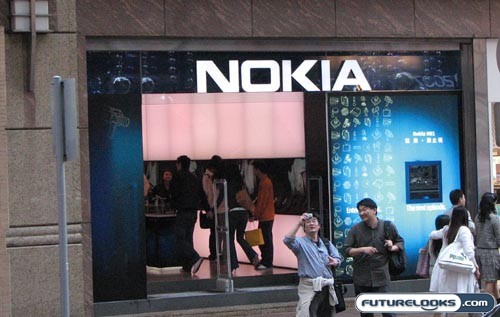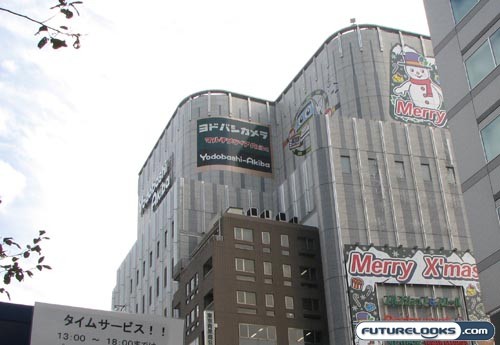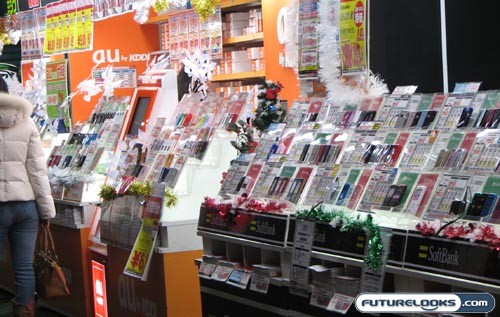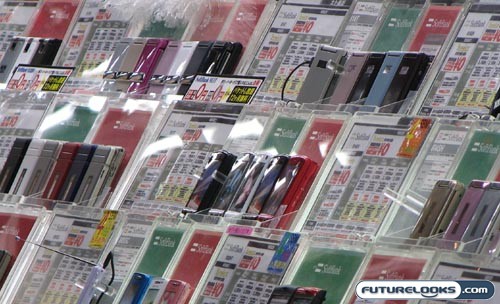
Take a look at the tagline for Futurelooks. It reads: “Digital lifestyle and Technology for the Masses”.
It used to be that only geeks would adhere to something called a “Digital Lifestyle”, but it has very much become the mainstream thing to rock the latest mobile phone or lust after the most recent iPod. We love our tech gear and so does everyone else. However, the concept of a digital lifestyle is not exactly universal and trends vary considerably across cities, countries, and cultures.
I recently had the opportunity to take a trip through Asia and I found that the mobile phone lifestyle and trends are considerably different in each destination. For the purposes of this article, I will explore some of the cell phone trends that I observed in Tokyo, Japan and Hong Kong, R.O.C., finally contrasting them with the trends found here in my hometown of Vancouver, Canada.
TOKYO: WHO NEEDS VOICE?

If you want the latest and greatest in what cell phones have to offer, Tokyo is a great city to visit. Not only do you get bombarded with plenty of advanced mobile phones, you also get to look at (and fondle) the latest technology in other areas as well. You probably already knew that, seeing how they’ve got plenty of robot technology, sleek laptops, and all sorts of awesome gear in Japan. They take their electronics very seriously and it shows.

Even in larger American cities, electronics shops aren’t all that huge. In Tokyo, particularly in the Akihabara area (“Electric Town”), you’ll find multi-level buildings that house nothing but cool gadgets and other electronics. The Yodobashi-Akiba store in Akihabara is seven floors! The entire ground floor is taken up by nothing but laptops and cell phones. You really have to see it to believe it. The same can be said about the Yodobashi location in Shinjuku.
In terms of cell phone trends, I observed the following:
- No phone without a contract – For a while, too many people came to Tokyo and purchased their phones, only to unlock them and ship them out to other markets (like Hong Kong). I’m not sure who was the one who stepped in, but they eventually passed a rule that handsets could not be sold without service. Breaking a contract would result in a very, very heavy termination fee. Not to mention, dishonorable.
- Japanese manufacturers only – Looking around, there weren’t all that many (if any) cell phones built by companies that weren’t Japanese. It was difficult to spot a Nokia (Finnish), a Samsung (Korean), or a Motorola (American). Instead, Tokyo citizens get bombarded by handsets made by Fujitsu, Toshiba, Mitsubishi, Sharp, and so on.
- Loving the square flip – The most popular style of phone in Japan seems to be the clamshell, particularly those with square-ish form factors and large color displays. Having an external display doesn’t seem to be all that important, because so many phones have rotating top sections.
- Who needs voice? – Strangely, Bluetooth headsets don’t look to be that popular in Japan. I didn’t see that many people chatting on their phones either. This is because voice calls are very expensive there, so people instead rely on alternative methods like e-mail, text messages, and MMS. I also found that many people took advantage of other services on their phones like mobile TV, mobile web, and mobile payment.

Nearly all of the cell phones sold in Japan are exclusive to the land of the rising sun. This is quite the stinker for the rest of us, because even if we could import a hot Sharp Aquos mobile phone, it would be quite the ordeal to get it working with Telus Mobility or AT&T. But man, those large high-resolution displays are hot!
Real-Time Price and Stock Check – Shop Like a Pro!
